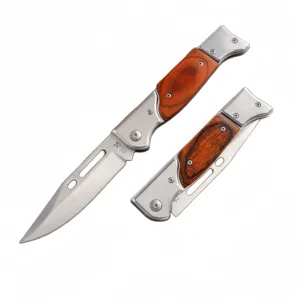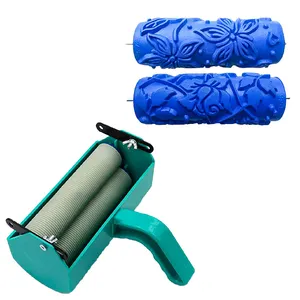Popular in your industry







































































Related Searches:

























































































































Top categories
About tjanting tool
The tjanting tool is indispensable in the ancient craft of batik, where wax is used to craft elaborate patterns on fabric. Resembling a pen, the tjanting tool features a handle made of wood or bamboo and a metallic spout, enabling the meticulous application of molten wax. It is fundamental to batik, permitting artisans to etch the fine lines and elaborate motifs that define batik's distinctive charm.
Assorted Tjanting Tools and Their Features
A spectrum of tjanting tools exists, each tailored to specific facets of batik artistry. The classic tjanting, with its singular spout, is preferred by purists for its precision and traditional appeal. For efficiency, multi-spouted tjanting tools expedite the process by laying down several lines of wax simultaneously. The electric tjanting tool maintains a steady heat, essential for prolonged tasks and keeping the wax at the right consistency. Needle sizes in batik tjanting tools range from the finest for intricate detail to larger gauges for broader strokes and filling expansive areas.
Intricacies of the Tjanting Tool's Design
The tjanting tool is thoughtfully engineered for both functionality and user comfort. Its handle, crafted from insulating materials like wood or bamboo, is contoured to rest comfortably in the artist's grasp during lengthy sessions. The metal bowl, affixed to the handle, serves as the wax reservoir. The spout or tjanting needle, emerging from the bowl, is finely wrought to ensure a smooth wax flow. The spout's design, with its exacting angle and opening, is pivotal to the tool's performance, as it governs the wax's delivery onto the textile.
Material Selection and Properties in Tjanting Tools
The materials for a tjanting tool are selected for their thermal attributes and longevity. Brass or copper are commonly used for the metal parts due to their superior heat conduction, which keeps the wax fluid. These metals also boast corrosion resistance, prolonging the tool's life despite regular exposure to wax and heat. The wooden or bamboo handles offer not only a comfortable grip but also act as heat insulators, enhancing user comfort. These material choices reflect a harmony between practicality and ergonomic design.
Commercial Use and Applications of Tjanting Tools
In commerce, tjanting tools are vital within the textile sector, especially in regions where batik is an integral part of the cultural fabric. They are employed in artisanal workshops and larger-scale textile production alike. The tjanting tool's precision enables the creation of premium batik textiles, which are then fashioned into apparel, home furnishings, and artworks. These batik creations hold considerable market value, often representing luxury goods that encapsulate cultural importance and skilled artisanship.
Utility of the Tjanting Tool
The tjanting tool is specifically crafted for the intricate task of wax application in batik patterns. Its utility extends to facilitating the signature crackled effect of batik when the wax is fractured and dye is introduced. This control over the crackling process is among the distinctive elements of batik that the tjanting tool enables.
Characteristics of the Tjanting Tool
The tjanting tool is characterized by a precision tip for fine work, a heat-resistant metal bowl for wax containment, and an ergonomically designed handle. These attributes coalesce to render a tool that is not only efficient but also enjoyable to wield. Electric tjanting tools further boast temperature control, a feature particularly appealing to artists undertaking extensive projects or requiring sustained tool use.
Advantages of Employing a Tjanting Tool
Utilizing a tjanting tool confers numerous advantages to the batik artist. It enables the crafting of complex designs unattainable with less specialized instruments. The tjanting tool also enhances the speed of wax application while preserving precision, leading to more productive output without compromising on quality. For artists, this translates to the capacity to produce more work in less time, and for entrepreneurs, it signifies increased production and the potential for augmented sales.
Optimal Use of a Tjanting Tool
To effectively wield a tjanting tool, one must first ensure the wax is at the appropriate temperature—sufficiently heated for flow yet not so intense as to damage the fabric or cause uneven lines. The tool should be gripped akin to a pen and tilted slightly to facilitate the wax's passage through the spout. The artist's movement should be consistent, allowing the wax to bond with the fabric without smearing. Periodic cleansing of the spout is imperative to avert blockages and guarantee a uniform line.
Selecting the Appropriate Tjanting Tool
Selecting the suitable tjanting tool hinges on the nature of the batik work envisioned. For detail-oriented tasks, a tool with a fine needle is indispensable. Conversely, for broader designs or filling spaces, a tool with a larger needle proves more effective. The handle should fit the artist's hand comfortably, and the metal components should be of high quality to ensure enduring performance and consistency.
Maintenance and Care for a Tjanting Tool
Cleaning a tjanting tool entails gently removing the wax while it is still tepid. For a more thorough cleanse, a solvent can be employed to dissolve any remaining wax on the metal parts. Routine maintenance should include inspections for spout damage and verification that the handle remains firmly affixed to the metal bowl.
Target Demographic and Their Requirements
The primary clientele for tjanting tools encompasses batik artists, textile designers, and fabric craftsmen. These instruments satisfy the demands of professionals who prioritize precision and dependability in their craft. For amateurs or those new to batik, tjanting tools offer a gateway to the art form, fostering exploration and skill development. By providing an array of tjanting tools with diverse features, Alibaba.com addresses the varied needs and preferences of this broad audience.



















































